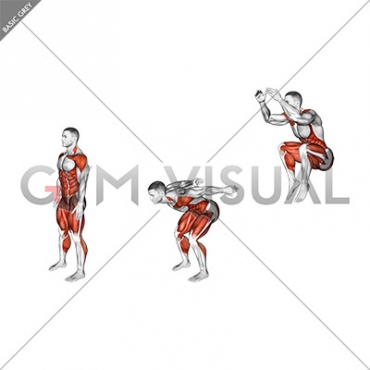


Place your hands on the floor directly in front and on the inside of your feet.Perform a mini squat by pushing your hips backward and bending your knees.Stand with your feet shoulder-width apart with your weight in your heels, and your arms down at your side.This should be quiet.Īim for 3 sets of 15 reps with several minutes, rest in between sets. Land softly on both feet with a slight bend in the knees.Jump straight up and swing your arms down and back next to your hips.Make sure your spine stays in a straight line and your chest stays lifted. Lower into a mini squat position by bending your knees and pushing your butt backward as if you are going to sit in a chair.5 Plyometric Exercises You Can Do at Home Squat Jumps Plyometric exercises can help improve your physical performance and increase your ability to perform daily and sports-related activities. Plyometric exercises can improve your muscle strength, power, and endurance, as well as your body’s agility and balance. They require your body to exert your muscles to their maximum potential in short quick bursts. Plyometric training is a form of exercise that focuses on speed and force to improve power. Niki Heeter, PT, DPT, ATC Why Do Plyometrics? Consequently, 12 weeks core stability training provides noticeable improvement for kinematic of tuck jump in youth soccer players with core dysfunction.By.

Study results showed that core stability training significantly reduced the mean of Tuck jump flaws. The aim of study was evaluating core stably. Data were analyzed using a mixed design (2×2) repeated measures ANOVA and Bonferroni test. The effectiveness of core stability training intervention was assessed by performing core stability tests with four positions.

Core stability training group completed 12 week training program, 3 sessions each week totally 36 sessions, while control group did only their soccer traditional training. The participants were divided randomly into two groups including core training group (n=15) and control (n=15) that both of them participated in pre-test and post-test (age 16.08☐.81 year, weight 64.16☘.61 kg, height 1.74☐.06 m, body mass index 20.89☑.78 kg/m2, competitive history 4.28☑.10 year). During TJA, players who their thighs were not parallel (peak of jump), had pause between jumps and did not land in the same footprint, considered as participants with core dysfunction. A total of 30 elite youth soccer players were included in this study which was screened by TJA to determine core dysfunction. This study aimed to investigate the effect of core stabilization training program on Tuck jump kinematics in male youth soccer players with core dysfunction. The Tuck Jump Assessment (TJA) has been proposed to identify neuromuscular deficits and plyometric technique flaws associated with anterior cruciate ligament injury.


 0 kommentar(er)
0 kommentar(er)
